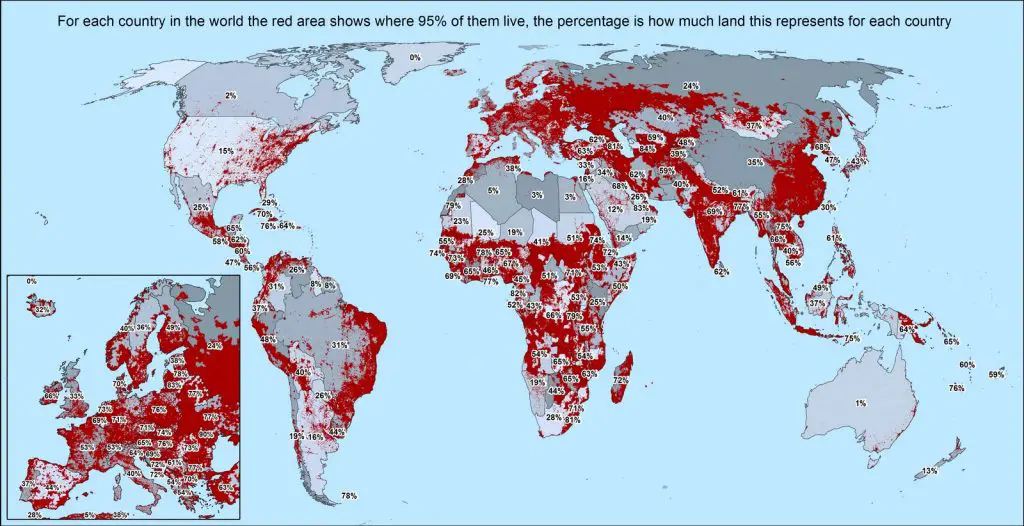The areas where 95% of the population live
The global population is more than three times larger than it was in the mid-twentieth century. The world’s human population surpassed 8 billion in mid-November 2022 from an assessed 2.5 billion people in 1950, adding 1 billion people since 2010 and 2 billion since 1998. The global population is predicted to increase by nearly 2 billion persons in the next 30 years, from the present 8 billion to 9.7 billion in 2050 and could culminate at about 10.4 billion in the mid-2080s.
More than half of all people live in just seven countries.
China and India have the world’s largest population. The following five most populous nations – the United States, Indonesia, Pakistan, Nigeria and Brazil – jointly have fewer people than India or China. But every country in the world also has an uneven distribution of population.
On the map below created by Reddit user neilrkaye for each country globally, the red area shows where 95% of them live; the percentage is how much land this represents for each country.

The map was created using country data and population data (1, 2). Using R dataset was created that represented the top 95 percent of every country’s population, i.e., the most highly populated grid cells that added up to 95% of each country’s population.
According to the map in India populate a large proportion of its land (71%), whereas in Canada and Australia, unsurprisingly, the population is concentrated in a minimal area (2% and 1%).









What is the source of the map? Is it your own? If so, can you specify on data source for mapping and calculations?
Have never seen a population map done this way before – fascinating!